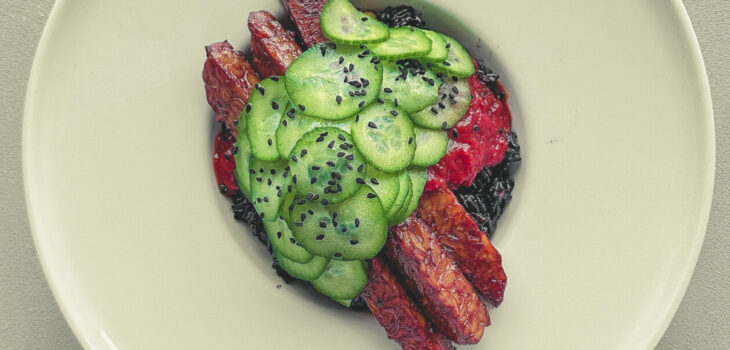
Sustainability in restaurants isn’t just a “green” marketing move — it’s a way to protect the environment, improve profitability, and future-proof the business.
Environmental responsibility
The food sector has a big carbon footprint, especially from livestock farming, food waste, and energy-intensive processes. Reducing impact helps combat climate change and preserve natural resources.
Cost efficiency
Sustainable practices (waste reduction, efficient sourcing, seasonal ingredients) often lower costs over time.
Brand reputation & loyalty
Diners are increasingly aware of where their food comes from. Restaurants that demonstrate genuine care for the planet stand out.
Regulatory readiness
Many regions are introducing stricter waste disposal, packaging, and sourcing rules. Early adoption avoids future compliance headaches.
Even if some diners aren’t environmental activists, their choices are influenced by sustainability trends:
- Health perception – Many associate sustainable food with fresher, cleaner, less processed meals.
- Ethical dining – Guests want to support businesses that align with their values (animal welfare, fair labor, biodiversity).
- Transparency & trust – A restaurant that openly shares sourcing and waste-reduction practices signals honesty.
- Social influence – Sustainable dining has “share appeal” — people like posting about eco-conscious restaurants on social media.
How to Build a Sustainable Plant-Based Menu
A sustainable plant-based menu isn’t just about replacing meat with vegetables; it’s about making choices that minimize environmental impact across the supply chain.
Step-by-step approach:
- Start local & seasonal
Build dishes around produce that’s grown nearby and in season to reduce transportation emissions and support local farmers. - Highlight whole foods
Avoid over-reliance on processed meat substitutes (they can have high energy inputs). Instead, feature legumes, grains, nuts, seeds, and fresh vegetables. - Use “root-to-leaf” cooking
Incorporate vegetable stems, leaves, skins, and trimmings to reduce waste.
Example: carrot-top pesto, broccoli-stem slaw. - Focus on biodiversity
Introduce lesser-used grains and pulses (millet, buckwheat, black-eyed peas) to diversify agriculture and reduce monocropping impacts. - Menu balance
Create variety in flavors and textures so plant-based meals feel indulgent and satisfying, not like an afterthought. - Educate through storytelling
Brief menu descriptions that mention local farms, organic growing, or zero-waste techniques make guests feel part of the movement.
Best Tips for Chefs to Keep It Sustainable
- Minimize food waste: Track waste daily, adjust purchasing, and repurpose trimmings creatively.
- Choose low-impact proteins: Lentils, chickpeas, tempeh, mushrooms — all have significantly lower carbon footprints than meat.
- Batch-prep smartly: Cooking in efficient batches reduces energy use.
- Preserve the season: Pickle, ferment, and dehydrate seasonal surplus for off-season use.
- Collaborate with suppliers: Ask farmers about “imperfect” produce — often cheaper, perfectly tasty, and reduces farm waste.
- Mind the cooking method: Steaming, braising, and stir-frying generally use less energy than long roasting or deep-frying.
- Keep creativity high: Diners choose sustainable meals more when they sound delicious first, and eco-friendly second.
- Train the team: Sustainability fails if only the head chef knows the plan — educate the whole kitchen and front-of-house crew.
We guide you to create a sustainable plant-based menu with seasonal, low-carbon dishes so you can see how all these principles look in practice. It would be ready-to-use for your restaurant. Get in touch.